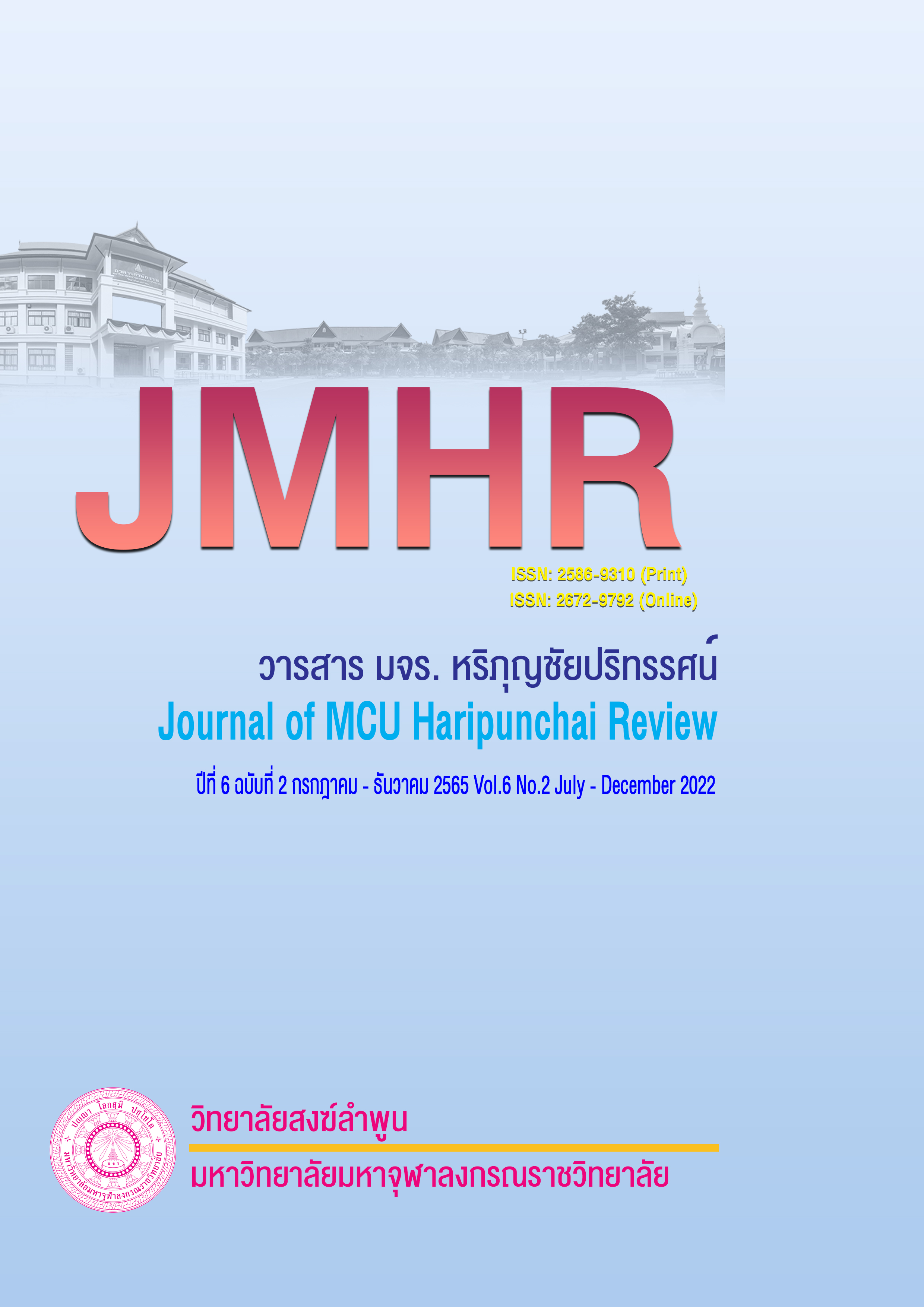Branding for cultural tourism in Lamphun province
Main Article Content
Abstract
The objectives of this research study are as follows: (1) to study the potential of cultural tourism and the potential of brand communication of cultural tourism in Lamphun province; and (2) to explore the approaches for branding of cultural tourism in Lamphun province. The data was collected with a mixed methods approach, using structured interviews with 15 key informants from the government, the private sector, the public and academia, and quantitative data collection with closed-ended questionnaires via an online system from a sample of 400 Thai tourists. The results of the analysis of the tourism potential of Lamphun revealed the following: (1) strengths: having faith in Buddhism, ethnic diversity, and being an all-year-round travel destination; (2) weaknesses: marketing public relations, tourism management, transportation and facilities; (3) opportunities: policies supporting tourism in secondary cities and information technology; and (4) threats, such as economic recession and emerging diseases. Its distinctive tourism brand identity is temples and ancient sites. Lamphun has a tourism brand image of beauty and a personality of having the most attractive tourism brand. The main tourism brand of Lamphun could be positioned as follows: (1) Lanna: heritage city; (2) multiethnic city; (3) traditional festival city; (4) Buddhism and a good mental health city, with vital brand management approaches in management, conservation, development, marketing, innovation and research.
Article Details

This work is licensed under a Creative Commons Attribution-NonCommercial-NoDerivatives 4.0 International License.
References
กระทรวงการท่องเที่ยวและกีฬา. (กันยายน 2563). สถิติด้านการท่องเที่ยวปี 2563. แหล่งที่มา : https://www.mots.go.th/more_news_new.php?cid=411 [21 มิถุนายน 2564]
ประภัสสร แสนไชย. (2554). กระบวนการถ่ายทอดความรู้หัตถกรรมผ้าฝ้ายทอมือ ของชุมชนบ้านดอนหลวง จังหวัดลำพูน. สารนิพนธ์ (ศศ.ม.การศึกษานอกระบบ). เชียงใหม่ : บัณฑิตวิทยาลัย มหาวิทยาลัยเชียงใหม่.
ปิยะชาติ อิศรภักดี. (2560). Branding 4.0 (พิมพ์ครั้งที่ 7). กรุงเทพฯ: อมรินทร์พริ้นติ้งแอนด์พับบลิชชิ่ง.
เพ็ญศิริ พันพา. (2564). กลุ่มชาติพันธุ์และมรดกภูมิปัญญาทางวัฒนธรรมจังหวัดลำพูน. ลำพูน: สำนักงานวัฒนธรรมจังหวัดลำพูน.
พยอม ธรรมบุตร. (2560). รายงานการวิจัยแนวทางพัฒนาแบรนด์ท่องเที่ยวเชิงวัฒนธรรม 4.0 ในชุมชนบางกอกใหญ่ กรุงเทพมหานคร. กรุงเทพฯ : วิทยาลัยการจัดการ มหาวิทยาลัยพะเยา.
มติชนออนไลน์. (24 ตุลาคม 2561). ผู้ว่าราชการจังหวัดลำพูน ขานรับนโยบายการส่งเสริมท่องเที่ยวเมืองรองของรัฐบาล หลังนายกรัฐมนตรีเดินทางมาลงพื้นที่ตรวจราชการจังหวัดลำพูน พร้อมมอบหมายการขับเคลื่อนการท่องเที่ยวเมืองรองอย่างเต็มที่. [ออนไลน์] แหล่งที่มา : https://www.matichon.co.th/publicize/news_1193668 [21 ธันวาคม 2564]
มนัสสินี บุญมีศรีสง่า. (2557) “การสร้างอัตลักษณ์ตราสินค้าแหล่งท่องเที่ยวอำเภอหัวหิน จังหวัดประจวบคีรีขันธ์ ในมุมมองนักท่องเที่ยวกลุ่มวัยรุ่น”. วารสาร Veridian E-Journal, 6(1), 548-560.
สำนักงานจังหวัดลำพูน. (2565). แผนพัฒนาจังหวัดลำพูน พ.ศ. 2566-2570. [ออนไลน์] แหล่งที่มา : https://www.lamphun.go.th/th/information/service/4/แผนพัฒนาจังหวัดลำพูน [21 ธันวาคม 2564]
สำนักงานนโยบายและแผนทรัพยากรธรรมชาติและสิ่งแวดล้อม กระทรวงทรัพยากรธรรมชาติและสิ่งแวดล้อม. (28 ตุลาคม 2559). แผนแม่บทและผังแม่บทการอนุรักษ์และพัฒนาบริเวณเมืองเก่าลำพูน. [ออนไลน์] แหล่งที่มา https://nced.onep.go.th/แผนแม่บทและผังแม่บทการ-2/ [21 ธันวาคม 2564]
Aaker, J. L. (1997) Dimensions of brand personality. Journal of Market Research, 34(3), 347–356.


